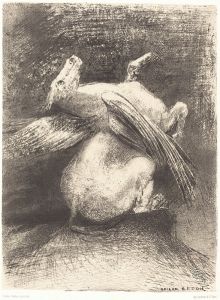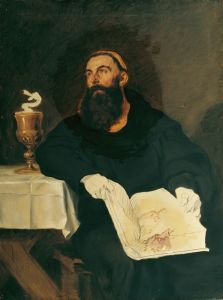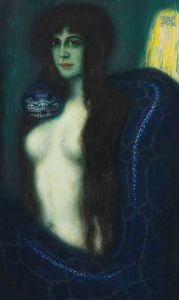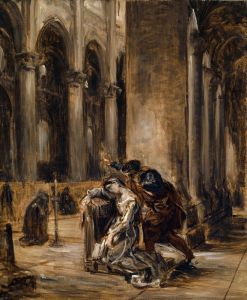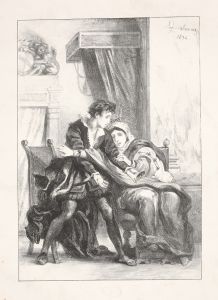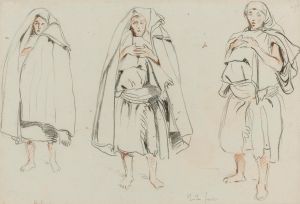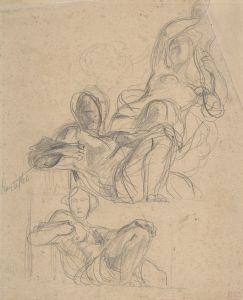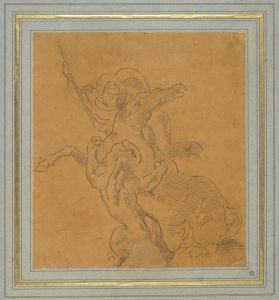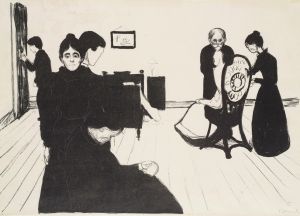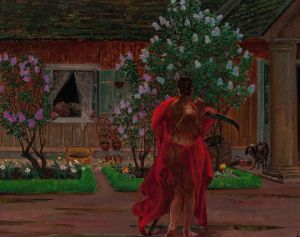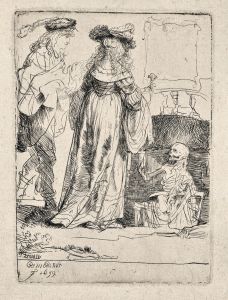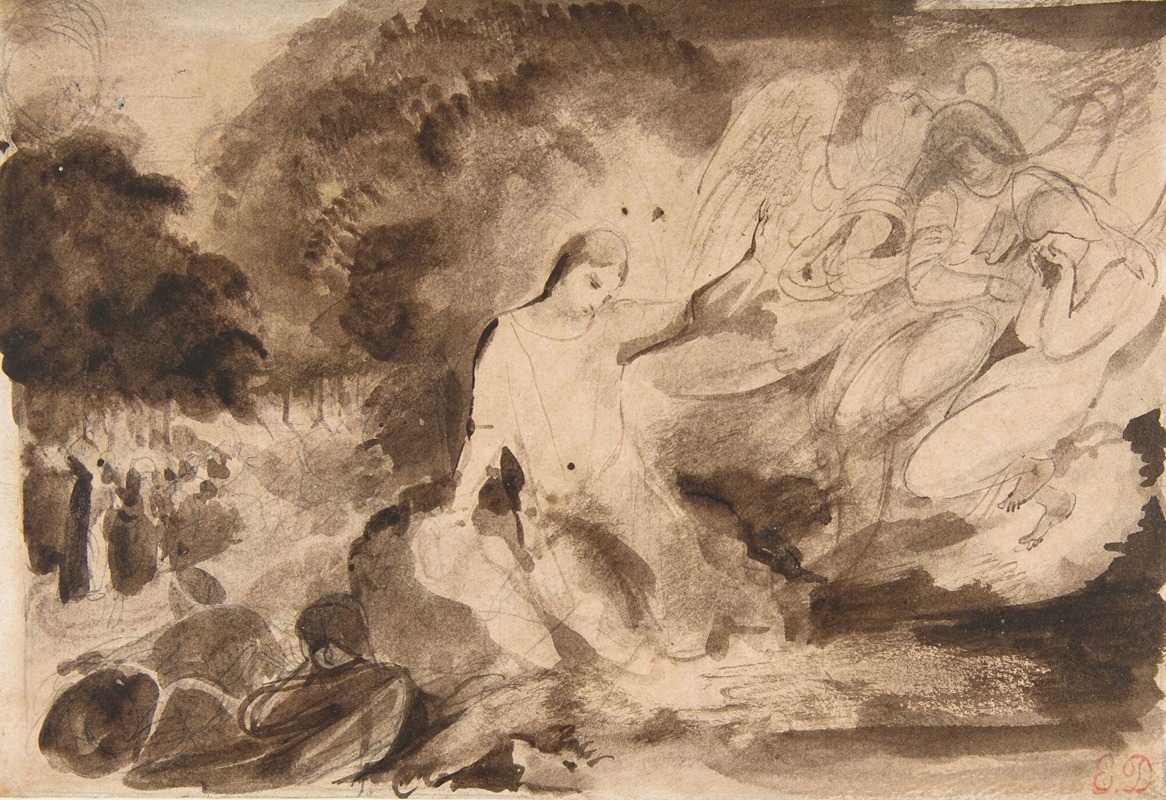
The Agony in the Garden
A hand-painted replica of Eugène Delacroix’s masterpiece The Agony in the Garden, meticulously crafted by professional artists to capture the true essence of the original. Each piece is created with museum-quality canvas and rare mineral pigments, carefully painted by experienced artists with delicate brushstrokes and rich, layered colors to perfectly recreate the texture of the original artwork. Unlike machine-printed reproductions, this hand-painted version brings the painting to life, infused with the artist’s emotions and skill in every stroke. Whether for personal collection or home decoration, it instantly elevates the artistic atmosphere of any space.
"The Agony in the Garden" is a painting by the renowned French Romantic artist Eugène Delacroix. Created in 1824, this artwork is an evocative depiction of a pivotal moment in the Christian narrative, specifically the episode of Jesus praying in the Garden of Gethsemane on the night before his crucifixion. Delacroix's interpretation of this biblical scene is notable for its emotional intensity and dramatic use of color and light, characteristics that are hallmarks of his style.
Eugène Delacroix (1798-1863) was a leading figure in the Romantic movement, known for his expressive brushwork, rich color palette, and ability to convey intense emotion. His works often drew on historical, literary, and religious themes, and "The Agony in the Garden" is a prime example of his ability to capture the human condition in moments of profound spiritual and emotional crisis.
In "The Agony in the Garden," Delacroix portrays Jesus in a moment of deep anguish and prayer, seeking solace and strength from God as he faces his impending suffering and death. The painting captures the tension and sorrow of this moment, with Jesus depicted in a kneeling position, his hands clasped in prayer, and his face turned upward in a plea for divine intervention. The use of light in the painting is particularly striking, with a celestial glow illuminating Jesus, symbolizing his connection to the divine and highlighting his isolation from the sleeping disciples in the background.
The composition of the painting is carefully structured to emphasize the emotional gravity of the scene. Jesus is positioned in the foreground, dominating the canvas and drawing the viewer's focus to his solitary figure. The disciples, Peter, James, and John, are shown in the background, asleep and unaware of the turmoil their master is experiencing. This contrast between the alert, suffering Jesus and his oblivious followers underscores the theme of loneliness and the burden of his impending sacrifice.
Delacroix's use of color further enhances the emotional impact of the painting. The dark, somber tones of the garden create a sense of foreboding and reflect the gravity of the situation. In contrast, the light that bathes Jesus is warm and radiant, symbolizing hope and divine presence even in moments of despair. This interplay of light and dark not only adds to the visual drama of the painting but also serves to convey the spiritual significance of the scene.
"The Agony in the Garden" is housed in the Church of Saint-Paul-Saint-Louis in Paris, where it continues to be admired for its artistic mastery and emotional depth. Delacroix's ability to convey complex emotions through his dynamic composition and vibrant use of color has made this painting a significant work in the canon of religious art.
In summary, Eugène Delacroix's "The Agony in the Garden" is a powerful representation of a key moment in Christian theology, rendered with the emotional intensity and dramatic flair that characterize the artist's work. Through his masterful use of composition, light, and color, Delacroix captures the profound spiritual and emotional struggle of Jesus, creating a painting that resonates with viewers on both an artistic and a spiritual level.






